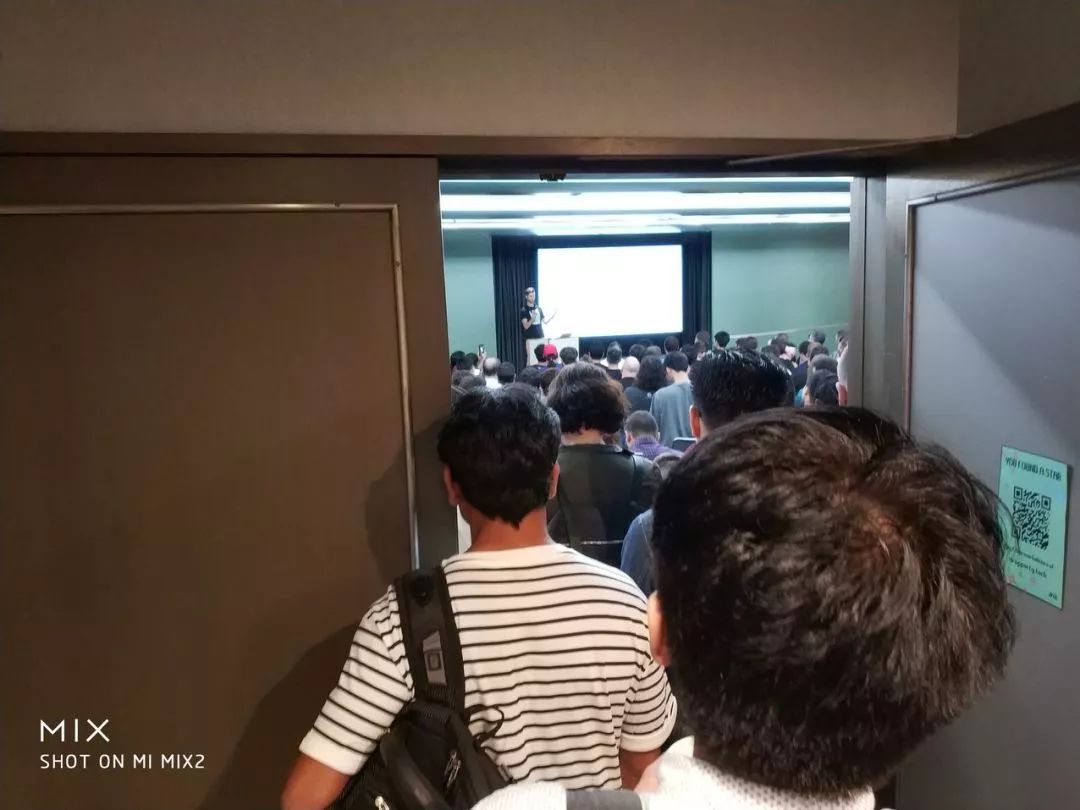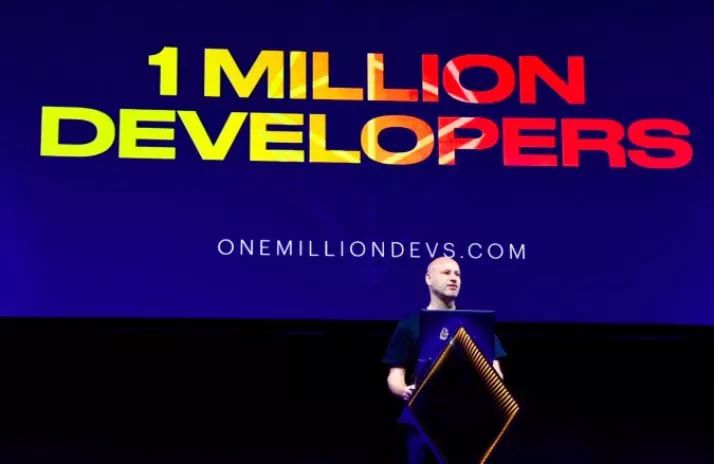Seeing this is equal to the vitality and chaos of Devon5: ETH2.0
Editor's Note: Bowen is the co-founder of the DDEX Decentralized Exchange, an Ethereum enthusiast and a Defi evangelist, or an analyst who has been the first to study Ethereum and to encourage other Internet entrepreneurs and investors to get on the bus. . This article is his travel account + thinking summary after I have been intimidated and tempted by several times. Thanks to Bowen, readers for Enjoy.
Before the text, let's take a look at some of the key points discussed by Devon5:
- ETH 2.0 will be a new chain, a new token system.
- Many final answers to the ETH 2.0 POS shards have not been determined, and the topic upgrades that everyone is most concerned about are still being actively discussed at https://ethresear.ch/.
- DeFi and decentralized organizations remain the most lively topics in the two ETH ecosystems.
- MakerDAO's multi-mortgage stabilization currency MCD will go live on 11/18, and collateral requires community voting.
On October 9th, 2019, 3,000 Ethereum developers, enthusiasts, and geeks came to Osaka, Japan to commemorate the 5th Developer Conference Devcon5.
Every year, Devcon has its own "mission". The atmosphere of Devcon5 is not as tense as that of Devcon2 when TheDAO hack is hard-forked. Everyone has a consistent question about the fate of Ethereum: The progress of ETH 2.0 and ETH The fate of 1.0, where is it going?
- imToken He Bin confirmed to attend the World Blockchain Conference · Wuzhen, he said that the wallet is the secret weapon of digital eternal life
- Xiao Zawan never imagined that the days of Libra’s “rebellion” came so fast.
- "Out of Control" and Blockchain: What misunderstandings do you have about the blockchain?
Although they are all new, different from the company's release of heavy new products, the assembly of the Ethereum development conference is relatively loose, can be summarized by a noun: TLDR: Too Long, Didn't Read. Many decisions are dynamically updated, and the only constant is the change itself.
Unlike the core logic of China's economy, “concentrating resources to do big things”, Ethereum has funded and coordinated a large number of ecological projects for cooperative development.
Take the ETH 2.0 client as an example, and there are 9 teams working on parallel development:
Https://docs.ethhub.io/ethereum-roadmap/ethereum-2.0/eth2.0-teams/teams-building-eth2.0/

Of course, this time Devcon also left a lot of room for ETH's potential competitors, including Cosmos, Polkdot, ETC, AVA Labs and other public chains. In addition, it is a public interest-based publicity, including UNICEF's first cryptocurrency fund created by UNICEF to support open source software for young children: https://www.unicef.org/press-releases/unicef-launches -cryptocurrency-fund
The number of people in the queue was the most intuitive barometer of the quality and attention of the conference. The first day of the morning, the lecture of Summa founder James Prestwich was very lively. The topics are: Why Dapp Users Will Hate Cross-Shard Comumnication and What You Can Do About It , mainly about why Dapp users hate cross-sharding calls and how to change cross-sharding calls.
Although the Dapp sharding will be a real practical problem after 2 years of invocation, the open and broad research and discussion has clearly begun. At 10:30, when the event started, there was no space available. 
The next day begins with the annual "Ethereum Art Performance". It is remembered that Devcon4's performance is a "Song against ICO", and Devcon5 begins with a local drum performance in Osaka, Japan, Hudson James. And the drums of Vitalik's “catch the ducks on the shelves” seem to also indirectly reflect the state of ETH 2.0 when everything is going on.
The focus begins with Vitalik's keynote, Vitalik Buterin: Keynote Address. Vitalik's speech started with the origins of Bitcoin and the problems solved, and then talked about the POS and POW disputes. The 30-minute theme and Q&A sessions did not face the issues that everyone was most concerned about:
- How many ETHs will be transferred from 1.0 to ETH 2.0?
- How much will the fragmentation TPS of ETH 2.0 increase? How many shards will there be?
- What are the different functions of ETH 2.0 different Phases, and what is the timetable?
- Will EVM be replaced by eWASARM?
- Where is the existing ETH 1.0 dAPP? (Ethereum 2.0 will not use EVM (virtual machine) for 2 years, which means that ETH will not have Dapp for 2 years)
The audience can only talk about these topics in the seats, and explore how ETH 2.0 tokens will have better liquidity on the exchange. ETH 1.x will be ignored like ETC.
The afternoon's presentation began with Rune, CEO of the MakerDAO Foundation, summarizing the 100,000 active DAI usage addresses, and more than 1.6 million ETH mortgages in the MakerDAO Smart Contract.
At the same time, MakerDAO announced that the multi-mortgage DAI will be launched on November 18th, and the collateral has not been finalized. The final collateral will be voted by the MKR holder at MakerDAO's weekly community meeting. The current potential options are mainly concentrated in high-value ERC20 tokens (including BAT, REP, DGD, etc.). There are also plans to bring offline assets (such as stocks, art, gold, etc.).
There are also several novel “brain-hole” sessions on the second day, including “How to combine MimbleWimble with Ethereum”, “Ethereum 93⁄4: MimbleWimble for ERC20 with zkSNARKS”, “Safety of ETH 2.0 Casper”, “How is it? The Raspberry Pi runs on the ETH 2.0 node and so on .
At the end of the afternoon, Mariano Conti, head of the MakerDAO smart contract in Argentina, said that he was talking about the use of cryptocurrency in high-inflation countries. As you know, Argentina's annualized inflation rate rose from 40% to 55% in 2019. As a member of the MakerDAO team, Mariano accepts DAI as a salary. Except for the rent of the rent and credit card, all the French currency is replaced by ETH.
At the same time, he loudly appealed to all Argentine compatriots to stand up for solidarity. The scene was abruptly changed, and the Ethereum swears-off meeting. The "politically correct" remarks exchanged the applause of the Ethereum fans.

On the third day, Joseph Lubin, co-founder of Ethereum and founder of Consensys, talked about the expansion of ETH 2.0. The test network TPS reached thousands, ETH2.0 Phase 0 expected 2020 Q1 to go online, and Phase 1-2 will go online at the end of 2020.
At the same time, he also shared the advantages of ETH as a world computer, programmable public chain:
- Token must be issued widely and fairly.
- Communities must be vibrant and growing. One way to achieve this is to make the tokens held by the community appreciate.
- The project must introduce sufficient funds for continuous improvement.
- Must meet regulatory requirements.
In a word: the price of the currency is high, the number of holders of the currency is high, and there is liquidity and compliance.
For the public chain ecology, another battleground is to develop talent. Consensys' Truffle framework and Metamask's web wallet are all necessary materials for developers to develop dapps. Lubin also understands "the iron-plated platoon, the running water soldier." The necessary and sufficient condition for the prosperity of the community public chain is to constantly attract developers to join and try. Although many core developers have shifted their focus to other projects in the past 19 years, it is a long-term solution to absorb new developers to solve new problems.

The above is the essence of Devcon.
In general, my feeling is: don't overestimate the achievements of the year, and don't underestimate the development of the decade.
There are always many people who criticize the ETH Foundation's management structure is loose and community meetings are inefficient. But conversely, this is why a steady stream of developers join the Ethereum ecosystem and not choose other public chains. Open, transparent, respecting the opinions of the majority of the community, and with a strong idealistic color, this is Ethereum.
The essence of the open source community is this, Chaotic but Vibrant, chaotic, and vibrant, because every participant has the right to vote and participate, hard fork is a function, not a bug.
The world of cryptocurrency in 2018 belongs to Ethereum, and in 2019 it is a bitcoin that has a high market capitalization. In 2020+, will ETH 2.0 after POS change the mainstream perception of ETH?
We look forward to.
Text | Bowen Wang
Produced | Odaily Planet Daily (ID: o-daily)
We will continue to update Blocking; if you have any questions or suggestions, please contact us!
Was this article helpful?
93 out of 132 found this helpful
Related articles
- Viewpoint | The cryptocurrency industry has reached a watershed, IXO to the left, mature public chain to the right
- The United States updated the cryptocurrency tax guide for the first time in five years, reading how to calculate taxable income
- Bakkt futures trading volume is new, but can it last?
- "E-commerce + blockchain": The time has come to subvert Amazon?
- The world's three major engine companies, the big troubles of the Westward Journey have come, the world blockchain conference · Wuzhen round table lineup announced
- Knock on the blackboard! Three questions that Zuckerberg needs to solve next week’s hearing
- US Senators "threaten" Libra members, revealing letters indicating that members either quit or are subject to regulatory "special treatment"






